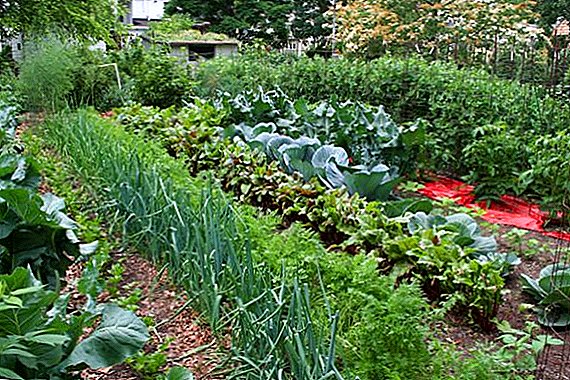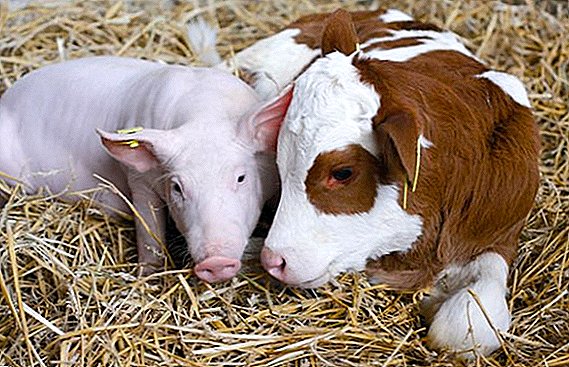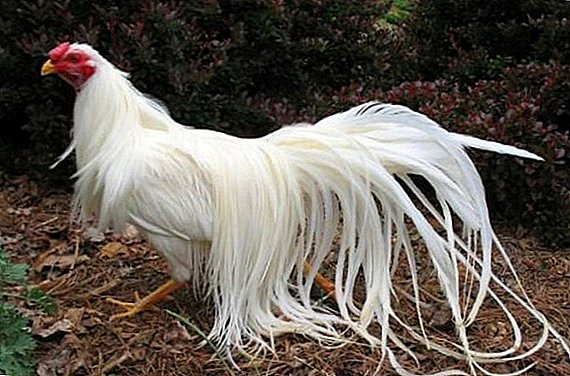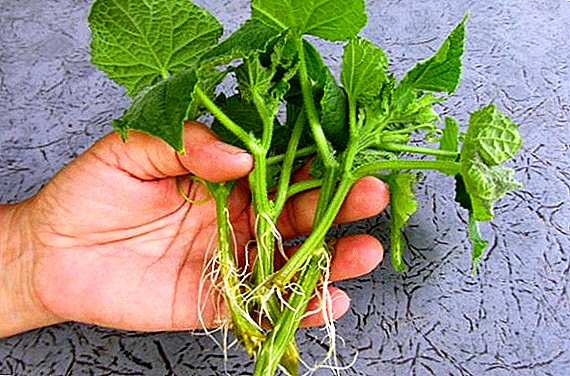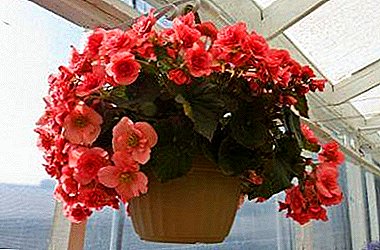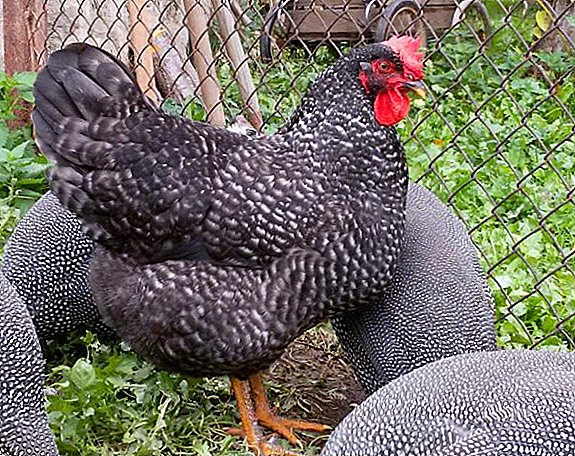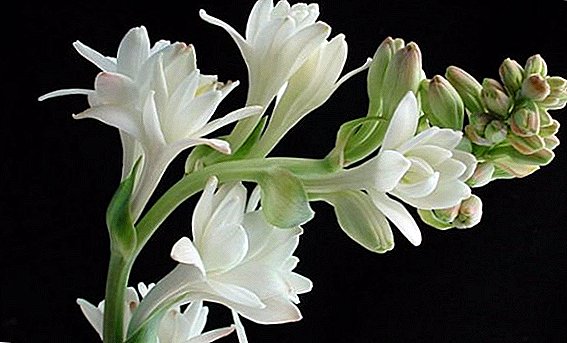 Not all gardeners know what tuberose is. This flower was very popular in the XYIII century and is now again in vogue with the design of the landscape of household plots. Tuberose in Greek means "white flower". For a strong extraordinary aroma, this plant is called the "queen of aromas." This heat-loving plant is difficult to grow in open ground in our climatic conditions. In this article we will talk about the features of planting and caring for tuberose on the site.
Not all gardeners know what tuberose is. This flower was very popular in the XYIII century and is now again in vogue with the design of the landscape of household plots. Tuberose in Greek means "white flower". For a strong extraordinary aroma, this plant is called the "queen of aromas." This heat-loving plant is difficult to grow in open ground in our climatic conditions. In this article we will talk about the features of planting and caring for tuberose on the site.
a brief description of
This plant has been found in Mexico, and is now grown in large quantities in India. There are 13 types of tuberosis, but only 2 of them are grown for decorative purposes: tuberiferous polyantes and polyantes broadleaf.  Like aloe, dracaena and lily of the valley, this plant belongs to the subfamily Agavevyh. Large flowers (4-6 cm in diameter) of white, pink or lilac color are collected in inflorescences on a long stem.
Like aloe, dracaena and lily of the valley, this plant belongs to the subfamily Agavevyh. Large flowers (4-6 cm in diameter) of white, pink or lilac color are collected in inflorescences on a long stem.
The Agave family also includes such plants as: yucca, sansevieria, dracaena sander, nolin.Tuberose is valued for its extraordinary rich aroma that resembles the smell of narcissus, oriental lilies and hyacinths.
Did you know? Tuberose extract is used in perfumery for the production of perfumes, smoking sticks and aromatic oils. From one ton of flowers you can get just one liter of oil.
Sprouting in pots
For cultivation of polyantes it is necessary to purchase large tubers. If you take last year's tubers, they must be divided (last year, "kids" were formed on the main tuber). It is better to germinate bulbs in February.  In pots with a diameter of 15-20 cm are planted with 2 tubers. At the bottom of the pots must be poured drainage and sand. For the cultivation of tuberose is suitable the same soil as for orchids. You can use this mixture: 1 part humus, 1 part sand and 1 part leafy ground.
In pots with a diameter of 15-20 cm are planted with 2 tubers. At the bottom of the pots must be poured drainage and sand. For the cultivation of tuberose is suitable the same soil as for orchids. You can use this mixture: 1 part humus, 1 part sand and 1 part leafy ground.
The tops of the tubers should protrude 2 cm above the ground. Sprout the bulbs in a warm room, make sure the soil is wet. Pots with bulbs covered with banks or cellophane. Shoots are best kept on the windowsill on the south side of the house.
Transplantation in open ground
Replant seedlings in May, when the weather is warm. Poliantes is undemanding to the soil and grows well in ordinary garden soil.  When planting in the wells, add sand and humus and make the distance between tubers 15-20 cm. At night and in cool weather be sure to cover the seedlings with oilcloth.
When planting in the wells, add sand and humus and make the distance between tubers 15-20 cm. At night and in cool weather be sure to cover the seedlings with oilcloth.
Important! Tuberose water only with warm water.
Care Tips
Watering this plant should be plentiful and often. 3-4 times during the summer, fertilize with complex mineral fertilizers and manure solution (1:10).  Tie long stalks during the flowering period so that they do not break. The flowering of polyantes ends in September, and no plants need to be watered after this.
Tie long stalks during the flowering period so that they do not break. The flowering of polyantes ends in September, and no plants need to be watered after this.
When and how to bloom
After planting in open ground, young plants vegetate for a long time. Flowering begins in August and lasts 3-4 weeks. The larger the tuber, the greater the number of flowers in the inflorescence. Flowering begins with the lower flowers. If you cut the inflorescence, then its flowering will continue for 7-10 days. You can see photos of tuberose flowers below. 
Did you know? This plant is a mandatory attribute of weddings in Hawaii (garlands of these flowers dress up the bride and the groom). In India, polyantes are used to decorate a bride's sari.
Fight against diseases and pests
Planted tuberose in the garden is rarely affected by disease. Pests repel essential oils of these flowers.
Can harm this plant root bulbous mite, Medvedka, nematode, aphid. In conditions of high humidity, polyantha affects penicillus, white rot.  For the prevention of disease, the tubers before planting should be treated with a solution of "Fundazol". In case of a lesion with a bulbous mite, a mixture of a solution of "Fundazole" and "Karbofos" is used.
For the prevention of disease, the tubers before planting should be treated with a solution of "Fundazol". In case of a lesion with a bulbous mite, a mixture of a solution of "Fundazole" and "Karbofos" is used.
Storage conditions for tubers in winter
Poliantes can winter in open ground only in very warm climates. Before the onset of frost, carefully dig up the tubers, clean them from the ground and process them with potassium permanganate.
Learn also how to preserve gladiolus, dahlia, and calla tubers in winter.On each bulb for a season 2-3 “kids” are formed. Dried corms are stored in a dry place at a temperature of 6-12 ° C. You can put them in containers with sawdust. In damp and cold rooms, the tubers will rot.
Important! Tubers that have bloomed, do not bloom again. They can be used for breeding.
Use in landscape design
Polyantes are loved for late blooming and are actively used to decorate recreation areas. When forming the flower beds, take into account the height of the stems of tuberose, it is more suitable for the design of the center of flower arrangements.  You can plant polyantes close to the fence to use as a support during the flowering period. Plant tuberose in beds in front of the entrance, because its most important advantage is its unique smell!
You can plant polyantes close to the fence to use as a support during the flowering period. Plant tuberose in beds in front of the entrance, because its most important advantage is its unique smell!
With proper and proper care, Tuberose will make your summer cottage not only beautiful, but also attract attention with an incomparable scent. This is exactly the plant that will make your flower kingdom unique.



